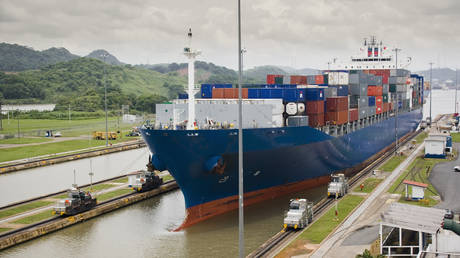
Panama Canal drought hampering global trade
Disruptions are forcing shippers to use longer and costlier routes, analysts say
Reduced water levels along the Panama Canal are disrupting global trade, forcing shippers to sail longer routes and pay higher freight costs, Reuters reported on Monday.
The man-made waterway in Central America, which provides a much cheaper route for ships to move between the Pacific and Atlantic Oceans, and handles about 5% of international seaborne trade, has been hit by severe drought in recent years.
A lack of water has created expensive challenges for companies as vessels have faced wait times of up to three weeks to pass through the canal.
Container ships, which transport consumer goods, typically reserve passage well in advance, and have not faced long delays. But vessels carrying bulk commodities generally don’t book passage.
The shipping snarl comes at the peak season for American crop exports, and the higher costs are threatening to dent demand for US corn and soy suppliers, who have already ceded market share to Brazil in recent years, the outlet said.
A number of US grain exporters were forced to reroute their crop shipments to Asia from Gulf Coast ports to Pacific Northwest ports. But that came at a higher cost as those facilities source grain mostly via rail as opposed to the cheaper barge-delivered loads supplying Gulf Coast exporters.
Read more
Global trade in jeopardy amid crises at key waterways – FT
“Commercial companies have been finding ways to navigate around the problem. But undoubtedly it costs the end-user more money,” said Dan Basse, president of Chicago-based consultancy AgResource Co.
Only five US grain ships bound for Asia transited the Panama Canal in October compared to 34 ships last year, according to a US Department of Agriculture (USDA) report.
“It’s causing quite a disruption both in expense and delay,” said Jay O’Neil, proprietor of HJ O’Neil Commodity Consulting. The current disruption of one of the world’s main maritime trade routes is the most severe in half a century of monitoring global shipping, he added.
The Panama Canal Authority restricted vessel transits this autumn as a lack of water hampered canal operations.
It cut daily transits to 22 vessels from the usual 35 and is planning to reduce transits to 18 by February. Further reductions could come if water levels remain low.
Protracted disruptions at the canal could continue to impede grain shipments well into 2024, when the region’s wet season may begin to refill reservoirs and normalize shipping in April or May, analysts said.
For more stories on economy & finance visit RT’s business section


